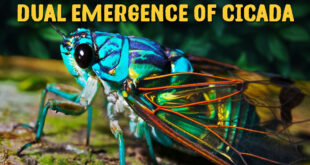The Andaman Islands are well-known for stunning beaches and now, the Sentinelese. Less-known are the colourful sea snakes – banded sea kraits – that also share these beaches. Now, a four-year study has helped shed more light on the mysterious terrestrial life of these amphibious snakes. Banded sea kraits hunt for their prey in coral reefs. Though they spend a lot of time underwater, they have to get back to land to digest their prey, lay eggs and even slough their skin. Yet very little is known about their terrestrial lives for they are mostly nocturnal. To learn more, a team including researchers at the Andaman and Nicobar Environment Team led 27 volunteers on walks along the New Wandoor beach in the southern Andaman Islands to monitor the presence or activity of sea kraits between 2012 and 2016. The groups walked a 680-metre stretch between 6.30 and 9.30 p.m., 181 times and recorded the sea krait species they saw and what they were doing there. The results, published in the Journal of Threatened Taxa, record both species of sea kraits on the islands: the yellow-lipped and the blue-lipped sea krait. They encountered 805 yellow-lipped sea kraits and 39 blue-lipped sea kraits on the surveys. The teams observed yellow-lipped sea kraits sloughing their skins on six occasions. They also observed pregnant females 37 times as well as brief courtship behaviour once. Another time, they also spotted a yellow-lipped sea krait resting in a hollow with an egg.
Locations
Both species were mostly spotted on wood or tree roots (especially of uprooted Manilkara littoralis, a mangrove tree) on the beaches where they were resting. The snakes also shared these tree-root crevices with hermit crabs. Sea kraits used the gradual slopes of sandy beaches to move from the sea to uprooted trees dispersed along the intertidal zone, suggesting that these beaches could be crucial for the snakes. However, authorities removed the uprooted trees after the end of the study to “clear the beach for tourism purposes”, note the authors. This could have “negative repercussions” for sea kraits, they add. “The uprooted trees in the Andaman Islands provide a very unique environment which sea kraits have habituated themselves to,” lead author Zoya Tyabji, currently with the Stellenbosch University in South Africa, said in an email to The Hindu. Giving legal protection to sandy beaches and implementing the ban on certain activities (including sand mining and tourism) can help conserve neglected fauna, she added.
Check Also
Dual Emergence of Cicada
Concept: Cicadas are insects belonging to the hemipteran order, renowned for their loud, intricate, …
 Chinmaya IAS Academy – Current Affairs Chinmaya IAS Academy – Current Affairs
Chinmaya IAS Academy – Current Affairs Chinmaya IAS Academy – Current Affairs



